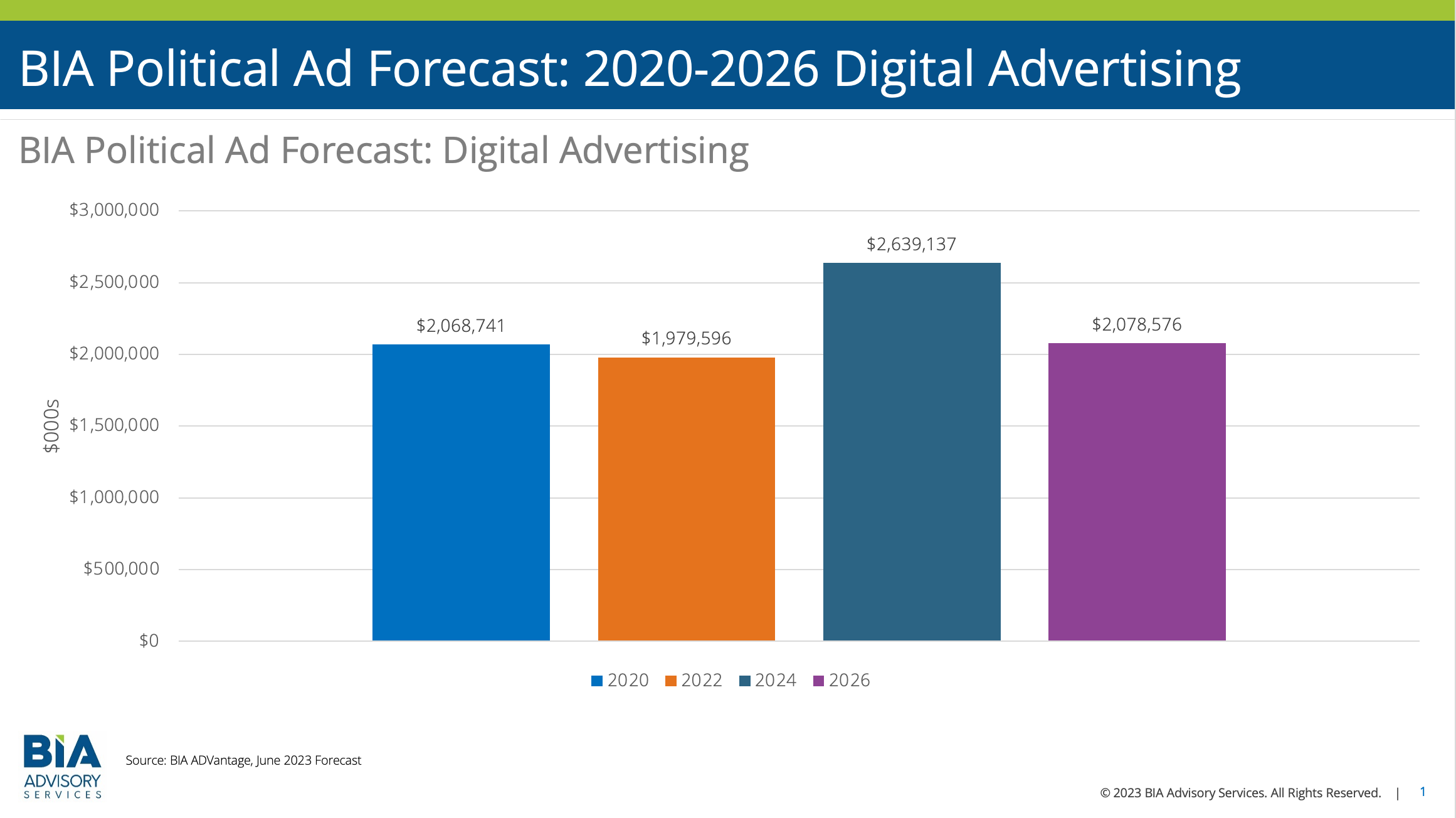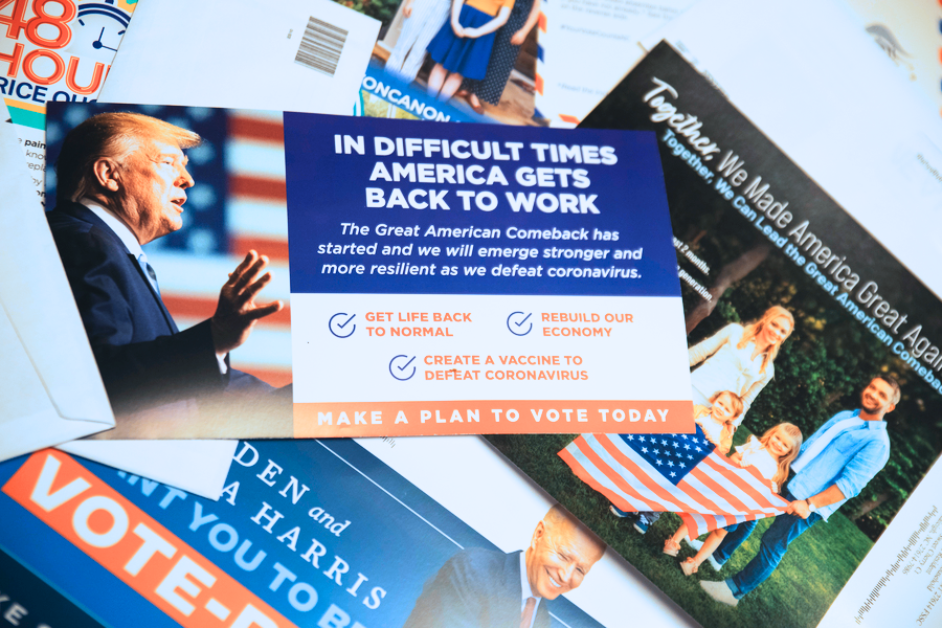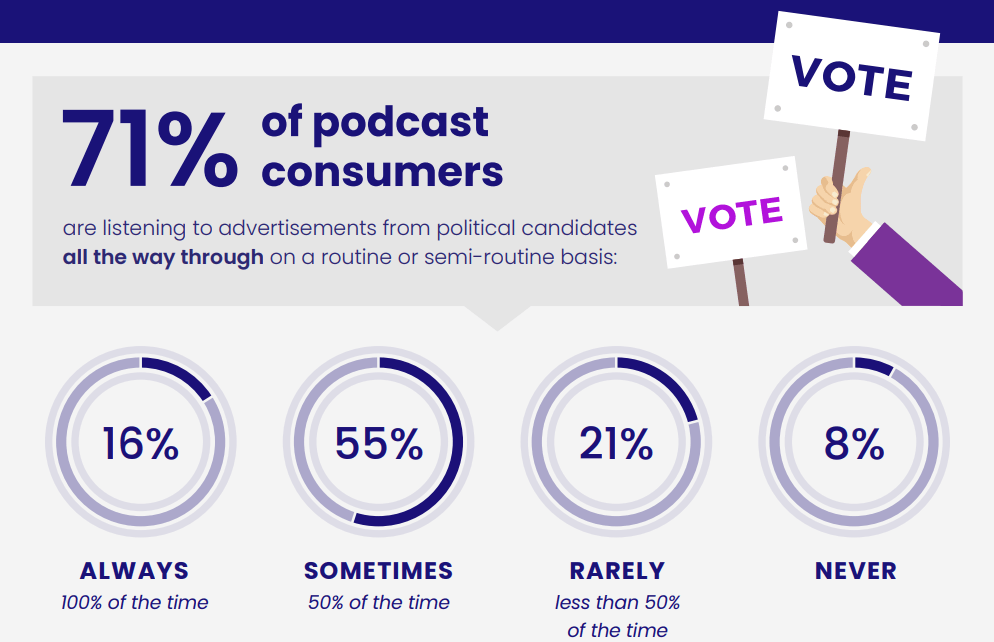It’s time to tighten our belts, folks. The 2024 presidential election is nearly upon us, which means we’re due for flurries of political advertising inundating our social feeds and complicating paid ad placements.
Some will call this “survival time” as we wait out the storm of political ads artificially hiking up CPMs
Key Highlights
- Political advertising formats span television, digital, print, and radio, each engaging voters and influencing electoral outcomes.
- The influx of political ad spend has driven up media costs for advertisers in the U.S., particularly in swing states.
- Transparency and compliance with legal requirements in political advertising are critical for maintaining credibility and trust, particularly through clear disclosure of funding sources.
The High and Low of Political Advertising
In a nutshell, political advertising is sponsored placements of mass communication to get votes, support, or donations.
These ads have to comply with specific laws, sometimes state by state, on political campaign ads and reflect the candidate’s message to maintain consistency in the election campaign, with the political committees, and with the political party.
Most political advertisements appear in a few common formats. We’ll cover these in more detail shortly, but initially, they consist of:
- Print Advertising: Traditional newspapers and magazines that target local communities, a trusted platform for grassroots campaigns
- Broadcast Advertising: Television and radio ads that offer broad reach, ideal for statewide or national campaigns, creating a significant impact through both visual and audio content.
- Digital Advertising: internet ads, including social media, that enable precise targeting and real-time feedback, making them essential for modern political campaigns.
- Direct Mail: Personalized mailers that reach voters at home, effective in delivering detailed information and persuasive messaging directly to individuals.
Key Takeaway:
Most Common Types of Political Ads
Political ads come in all shapes and forms, catering to different demographics and campaign goals. Television ads have a broad impact, while digital ads offer targeted precision. Both are crucial in shaping public perception and influencing voter behavior. Political ads are highly saturated in battleground states, which is indicative of the intense competition for voter attention. It’s no surprise, after all. In those states, every vote is critical.
Here’s a few observations we’ve made about political ad spend across the following formats.
TV Ads
Television ads remain central to political advertising. Linear television, with around $8.5 billion in campaign spending, is the most expensive medium due to its spending transparency and ability to track commercials across platforms.
Connected TV (CTV) is gaining traction, with political ad spending projected to rise by 24% from previous midterm levels, reaching $1.34 billion. This growth is driven by refined targeting capabilities and strategic pivots toward digital streaming.
Despite digital alternatives, linear TV is expected to attract about 70% of the total political ad budget.
This is a big deal for non-political advertisers, as it crowds the ad space and raises the prices across the board for TV ad placements.
It’s also challenging because TV audiences are so ubiquitous, meaning that there’s a lot of audience overlap for advertisers competing to show their ads over others. And it’s made even worse when political advertisers enter the fray.
Digital Advertising
Digital ads have amplified political campaigns by enabling targeted outreach and engagement. Anticipated to receive around $2.6 billion, digital ads constitute about 28% of total political ad expenditures this election cycle.

The transition from traditional media to online platforms signals the increasing importance of online advertising in reaching and engaging voters. Like with TV ads, it inflates the costs and competition in search engines and on social media.
Print Advertisements
Print advertisements remain crucial, especially for local and down-ballot races. Local newspaper ads often serve as the primary medium, providing a platform for grassroots advertising that connects candidates with voters on community-specific issues. This approach is effective in smaller, tightly-knit communities where personal connections and local concerns influence voter behavior.

Source: MIT
Even with digital media’s popularity, print advertising remains valuable for campaigns focused on local engagement and accessing older demographics.
Its tangible nature and established presence in communities make it a trusted information source, helping candidates build credibility and support.
Unfortunately, when political campaigns ramp up their spending on print ads, it drives up costs and makes it harder for local businesses to afford the same spots. Smaller advertisers can get squeezed out as political campaigns with bigger budgets take over the prime ad space.
Radio Advertisements
Audio ads, including broadcast radio ads and podcasts, are gaining popularity in political campaigns. These can reach audiences during commutes and daily activities, making them a strategic choice.
Podcasts, as a medium for political advertising, show us how people are veering away from traditional radio and more toward on-demand audio. To that end, we’re seeing more political ads appearing not only on radio but also in between podcast segments.
It’s even more interesting that 53% of podcast listeners anticipate and desire hearing candidate messaging through podcast marketing.

Yet again, as political campaigns buy up more radio and podcast ad slots, other advertisers will find it tougher and more expensive to get their messages out during the months leading up to the election.
Key takeaway:
How To Prepare For Increased Political Advertising During Election Season
Election seasons often lead to increased competition for advertising space, driving up costs and making it challenging for non-political advertisers to maintain visibility.
Here are some quick PPC audit tips to help advertisers manage rising costs and stay effective during these competitive periods:
- Budget Flexibly: Prep for higher ad costs during election months by budgeting flexibly. Anticipate the price surge and adjust your ad spend accordingly so you can still get the key placements without going over budget.
- Diversify Ad Channels: Don’t just go with the most popular or expensive channels. Explore other ad platforms that may be cheaper and less competitive, like local newspapers, niche websites, or podcasts. This will help you stay visible without breaking the bank.
- Wait it Out: Run ads either well before or after peak election ad periods. If you time your ads right, you can avoid the most expensive slots and still reach your audience.
- Dial-Up Retargeting: Maximize your existing audience by focusing on retargeting campaigns. Targeting users who have already shown interest in your products or services will get you better results with a smaller budget.
- Lean into Organic: Increase your organic marketing efforts on social media, content marketing, and SEO during election seasons. These will help you stay visible without the high costs of paid ads.
- Partner with Others: Consider partnering with other businesses to split the ad costs. Collaborative campaigns will get you more reach without the financial burden on one advertiser.
You might not prefer some of these, and neither do we, but if you consider these strategies, you’ll have a better chance at handling the astronomical costs of advertising during election seasons while still contributing toward your marketing goals. It will be a tough time, no doubt, but it’s something we all have to face.
It’s why during election periods, we get a lot of people reaching out to us at Single Grain asking for help to optimize their ads during election periods for maximum impact. If you’re in a similar boat, we encourage you to reach out to us.
Key takeaway:
Budgeting for Maximum Impact
Effective budgeting is essential for maximizing the impact of political ads. U.S. political spending is projected to exceed $12 billion before the November election, with significant investments in both digital and linear advertising. The high costs of placements, especially in swing states, necessitate strategic budgeting for optimal reach and influence.
Source: eMarketer
Advertisers should adjust budgets to maximize impact before ad-heavy periods like late October and early November. The rise in Cost Per Mille (CPMs) for placements is no surprise here. It’s a reminder that advertisers should return to optimizing creative, targeting, and landing pages for best results.
Key takeaway:
Last Words on Political Advertising Spend
Political advertising can throw a big wrench in any marketing plan, especially when election season is at its most heated point. With billions being spent on TV, digital, print, and radio ads, it’s easy for regular advertisers to feel squeezed out of the game.
But don’t worry—you’re not powerless here. With some smart planning, you can still reach your audience without blowing your budget. Stay flexible, keep an eye on your goals, and remember—this too shall pass. And when it does, you’ll be ready to hit the ground running next year.
If you’re ready to start optimizing your paid media during the election season, Single Grain’s marketing experts can help!👇
Frequently Asked Questions
-
What is the primary purpose of political advertising?
The primary purpose of political advertising is to garner votes and financial or other support by effectively engaging with voters and raising campaign awareness. This is achieved while ensuring compliance with applicable regulations.
-
How much is expected to be spent on digital ads in the 2024 election cycle?
In the 2024 election cycle, it is expected that around $3.46 billion will be spent on digital ads, representing approximately 28% of total political ad expenditures.
-
What are the disclosure requirements for political ads?
Political ads are required to include disclaimers that specify who funded the advertisement, ensuring transparency and accountability across various media formats.
-
How can campaigns effectively target specific voter demographics?
Campaigns can effectively target specific voter demographics by utilizing data analytics, artificial intelligence, and micro-targeting to tailor personalized messages for each voter segment. This strategic approach enhances engagement and increases the likelihood of voter support.
-
What future trends are expected in political advertising?
Future patterns in political advertising will likely emphasize augmented reality, personalized mobile ads, and a growing reliance on data analytics and real-time feedback to enhance campaign effectiveness.
Recommended Video
For more insights and lessons about marketing, check out our Marketing School podcast on YouTube.



